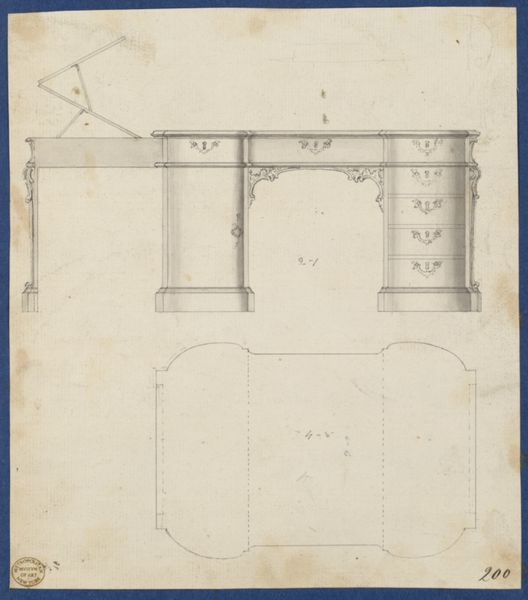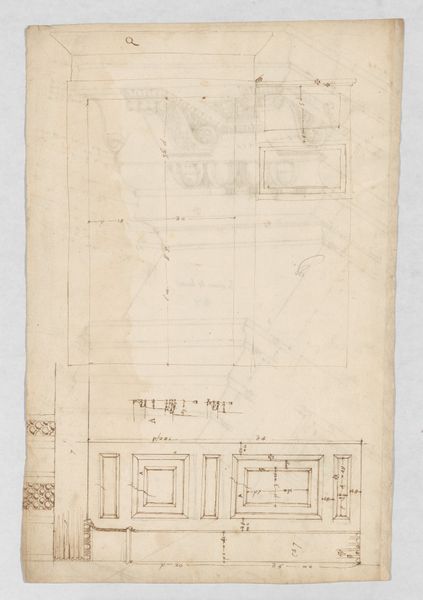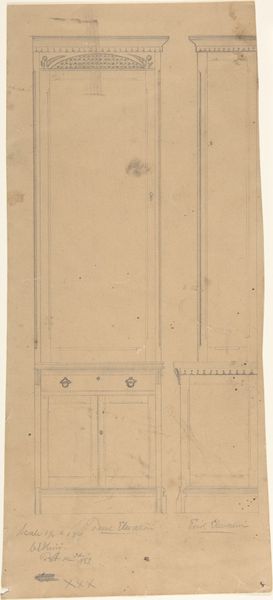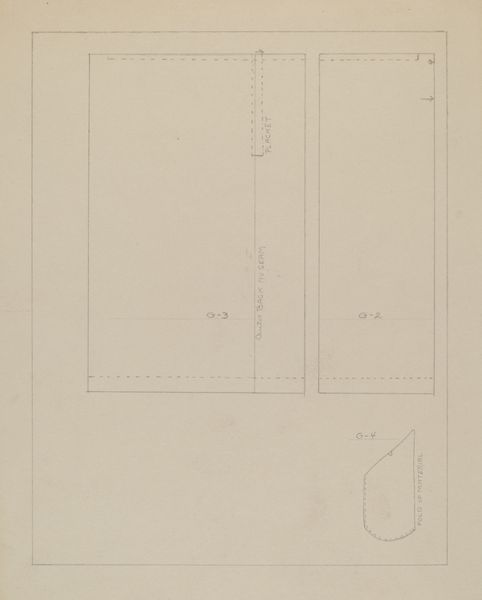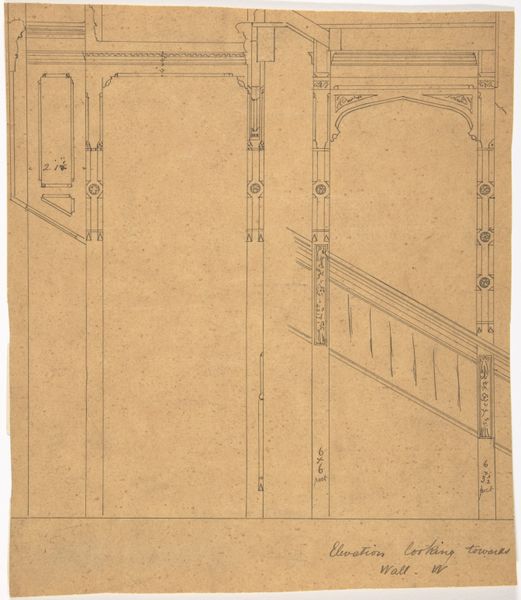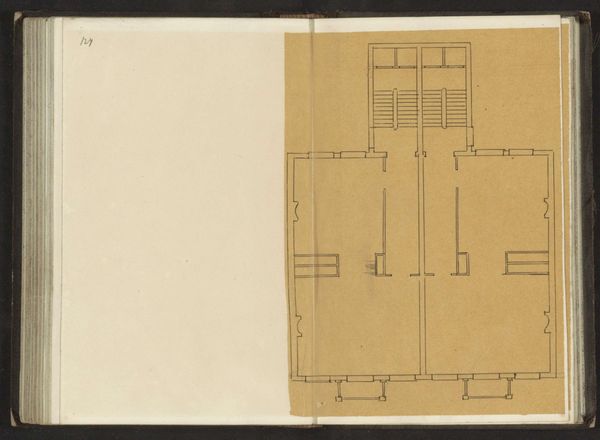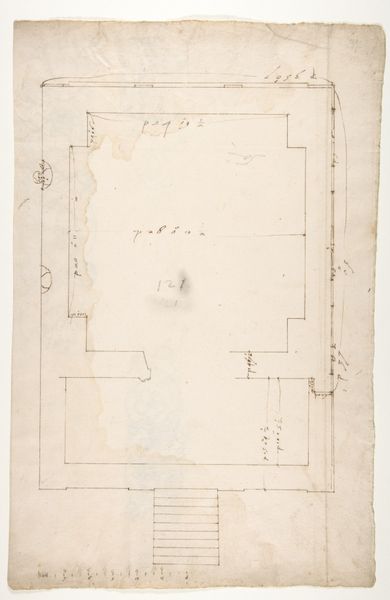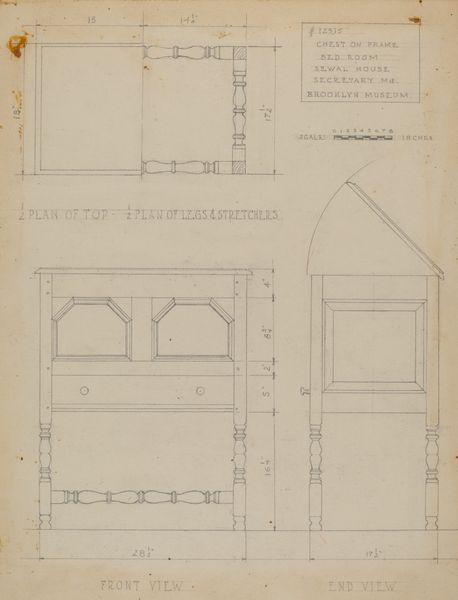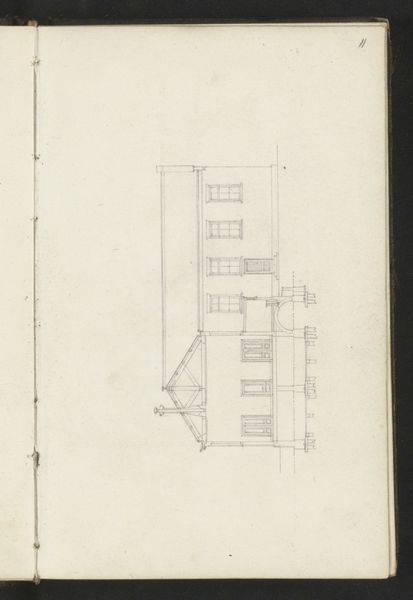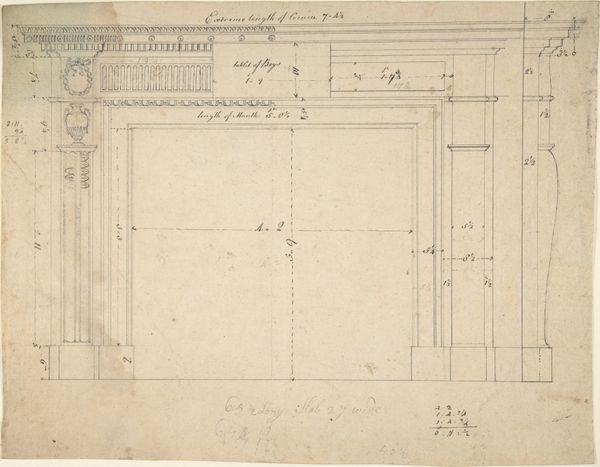
drawing, pencil, architecture
#
drawing
#
neoclacissism
#
classical-realism
#
form
#
geometric
#
pencil
#
line
#
architecture
Dimensions: sheet: 21 1/4 x 13 7/16 in. (54 x 34.2 cm)
Copyright: Public Domain
Robert Mylne the younger created this design for an entablature in pen and ink on paper. Mylne was born in Edinburgh, but practiced architecture in London, and this drawing reflects the contemporary fascination with classical forms that marked the late 18th century in Britain. The image presents us with a detailed cross-section of an entablature, the horizontal architectural element supported by columns or walls. In its symmetrical rendering and careful articulation of Doric motifs, Mylne’s design exemplifies Neoclassical architecture, which revived the aesthetic principles of ancient Greece and Rome. In Britain, this classical revival became entwined with ideas of civic virtue and imperial ambition. Architects like Mylne sought to create buildings that reflected the perceived order and rationality of classical civilization. By exploring period pattern books, architectural treatises, and the built environment itself, the social historian can trace how classical forms were adapted, reinterpreted, and deployed to convey specific meanings. In doing so, we can reveal the complex interplay between aesthetics, politics, and society in the art of the late 18th century.
Comments
No comments
Be the first to comment and join the conversation on the ultimate creative platform.

